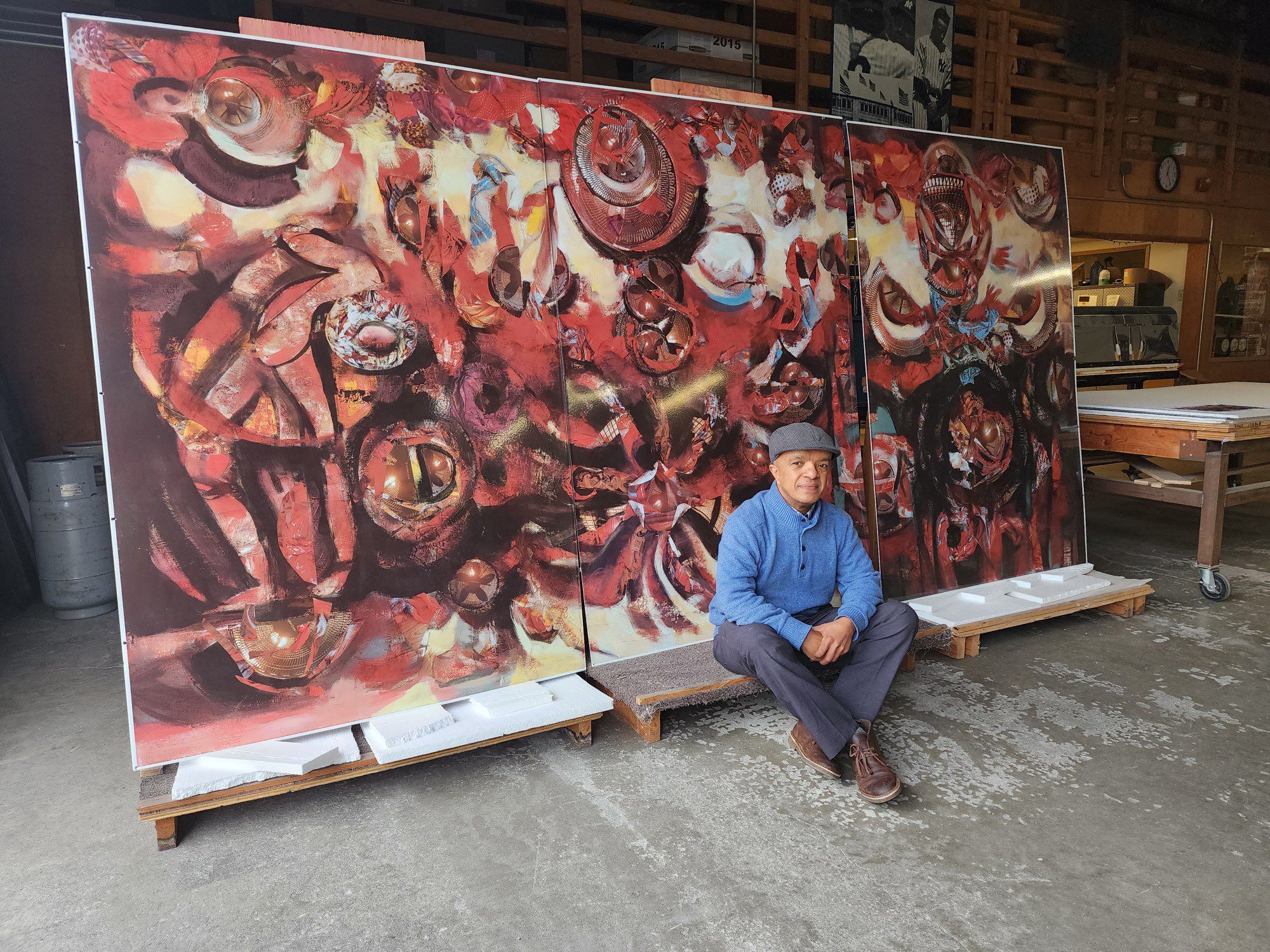
by Dr. James R. Gore
The artwork tribute to August Wilson behind the Seattle Repertory Theater on the Seattle Center campus by Mindy Lehrman is a red door with Wilson’s image. A red door has cultural and historical significance. According to the online magazine, Doors and More (Berry, 2020), “In America a red door holds the historical significance of meaning people are welcome at the homes that host a (red) painted door. Travelers were welcome to rest and have a meal, and during the Civil War in the Underground Railroad, runaway slaves would also see a red door as a sign of a safe house.”
I recently attended August Wilson’s play How I Learned What I Learned at the Seattle Repertory Theater (April 21 – May 14). The play, an autobiographical monologue, was co-presented by the Seattle Repertory Theater and the Oregon Shakespeare Festival. Todd Kreider is credited as the play’s co-conceiver, the performance was directed by Tim Bond and performed by actor, Steven Anthony Jones. The How I Learned What I Learned world premiere was presented by the Seattle Rep in 2003, and performed by August Wilson (Encore Media Group, 2023). Since this is the play’s 20th anniversary, it reflects Wilson’s timeless art of storytelling.
The Seattle Times’ article by Jerald Pierce (2023) regarding How I Learned What I Learned states: “Nearby Seattle Rep is one of a few theaters in the country that has produced all 10 of series of plays that each take place in a different decade of the 20th Century, also referred to as “The American Century Cycle.” The “American Century Cycle” does not include How I Learn What I Learned; therefore, the Seattle Rep has produced 11 of Wilson’s stage works. August Wilson and his wife, Constanza Romero, who is credited as the play’s costume designer, lived in Seattle until Wilson’s passing in 2005. The Seattle Rep is considered Wilson’s “creative workshop,” and the theater which premiered the finale of his great body of work.
How I Learned What I Learned provides Wilson’s life in America from an African American perspective. The play’s colorful dialogue had a rhythmic flow, and its mannerism, and attitude pertained to African Americans who’d moved to inner cities in America during the Great Migration of the 20th Century. Notwithstanding, the title, How I Learned What I Learn formulates a question. Why a question? “A question is a uniquely human phenomenon based on inquiry of our experiences,” (Reichmann, J.B., 1980, Chapter 2). Wilson’s storytelling reflects the Pittsburg community in which he grew up, as well as the experiences which initially influenced his life. As one of America’s most celebrated playwrights, Wilson artistically tells an American story using African American aesthetics. Yet, How I Learned What I Learned is purely human, with a sense of self-inquiry, it completes the “Cycle”!


